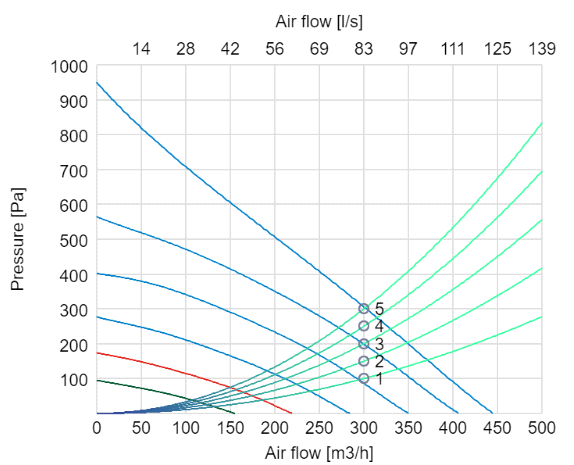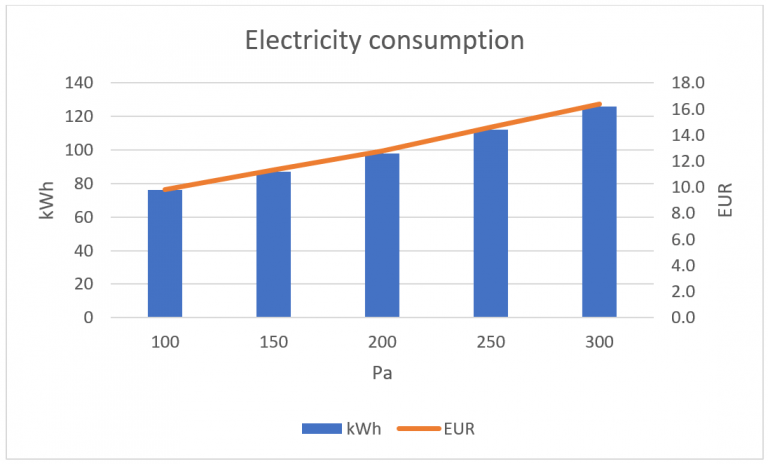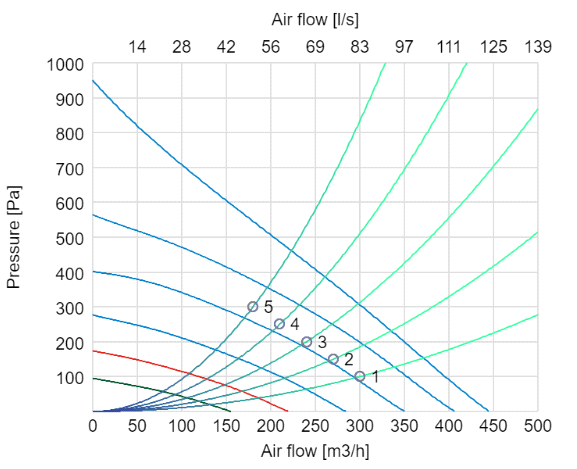
Why do you need to replace filters?
We have been often receiving a question from our clients: why do I need to change the filters? One of our clients was surprised to know that he needs periodically change filters in its Domekt R 400 V: „Of course I understand that I need to change filters in my vacuum cleaner, but this is different!“.
First, all manufacturers of air handling units, doesn’t matter, if it is SALDA, Wolf or Swegon, clearly state that if you don’t change the filters on time, your warranty is being voided. And don’t be surprised that in case of AHU failure, the first question of the service company will be “when did you change the filters?”. And even if the dirty filters are not a cause of a malfunctioning, all of the ventilation companies will take chance to recall their warranty obligations. The same happened with Volvo of my former colleague: he “forgot” to do the first obligatory maintenance and his warranty was terminated. Let’s hope it will not break in 5 years.
But one of the main reasons to change filter is not related to warranty issues. One of the main reasons is higher electricity consumption (especially important if the high utility payments significantly cut your funds). If your heat recovery unit is stuffed with a more advanced control system, as e.g. Smarty 3XP from SALDA, you can set to maintain constant airflow volume (I can see Komfovent representatives shouting, that you can also connect sensors for constant volume to Domekt. But only show us diploma in electrical engineering at first ????). In such case, a comfortable indoor climate will be maintained even if the filter gets more contaminated. Nevertheless, electricity consumption will increase gradually? But how much?
Contaminated filters increase your electricity bill
As SALDA is one of a few ventilation equipment manufacturers, which provides free software to calculate data and electricity consumption, I will use their calculation program to demonstrate how much dirty filters may increase electricity costs. Let’s suppose you live in a private house and you have installed Smarty 3XP for ventilation. Initial settings are: airflow volume 300 m3/h and pressure drop 100 Pa. As the filters get more contaminated unit will try to compensate airflow drop and airflow point will change

You will be provided with similar fresh air volume until the maximal point of pressure drop at such airflow is reached. If pressure drop increases due to a higher contamination unit will supply a lower amount of air.
How much it’s related to electricity and your expenses?

Very contaminated filters “require” 1.7 times more power from the fans and therefore the electric energy expenses are higher. You will face such an increase in energy consumption and your monthly bill (if electricity costs 13 Euro cents per 1 kWh).

The maximal difference is 6.6 € per month. It seems not much (for such a small difference we should be grateful for EU regulation, which forced manufacturers to use efficient EC type fans). Especially if FLEXIT UNI 3 filters set costs about 50 € at my competitor’s store. But yearly it may cost extra 79 €. Therefore, if the pressure drop increases in 150 Pa you should think about purchasing new filters set.
Lower airflow volume leads to worse indoor climate
But as I‘ve mentioned in my previous article, that most of the manufacturers of residential heat recovery units do not allow themselves such “a high extra cost” to install pressure switches. It’s quite strange, because if you buy Audi A6 you usually get more interesting features, than in my official Caddy. But even the most “expensive” trademarks, as Systemair, or even FLEXIT, tries to save every cent. You will pay extra just for a brand, therefore don’t be surprised if it’s manufactured e.g. in Lithuania and not in Sweden.
So, most of air handling units for residential premises are not equipped by any pressure devices. So what will happen by contamination of filters? In such a case unit as e.g. Domekt R 200 V or RIRS 400 HE EKO 3.0 will use the same amount of energy, but the quantity of the fresh air will decrease gradually. I will show how much it may affect airflow with Smarty 3XP unit.
The supply airflow will decrease as follows:

According to Danish standards it’s recommended to provide 1 person with a fresh air of 10 l/s or 36 m3/h. Let’s deduct airflow volume to extract smells etc., for about 60 m3/h. Thus, a family of 5 persons needs about 180 m3/h of the fresh air. So, it is required to supply 240 m3 fresh air hourly. Therefore, when filters get more contaminated, air quality will decrease accordingly. You may notice it by e.g. dew on the windows or bad smells. Ventilation experts will start to explain, that it’s possible to increase airflow volume by changing settings (similarly like with constant airflow, but manually ????). But who from the ordinary users knows how to do it? Or simply wants to do it? Also if you have the most basic control panel, even with FLEXIT UNI 2, you won’t be able to do it.
Conclusions
Theoretically, everything looks nice. But EU does not require “domestic” air handling units to be equipped with pressure devices for filter pollution monitoring. All ventilation companies use the timer, and set the time, according to the worst-case scenario. But I will talk about this in the next articles.
Let’s summarize: by not changing filters periodically you are not only risking losing your warranty or lower unit’s service lifetime but also may face higher electricity bills and lower quality indoor climate.
